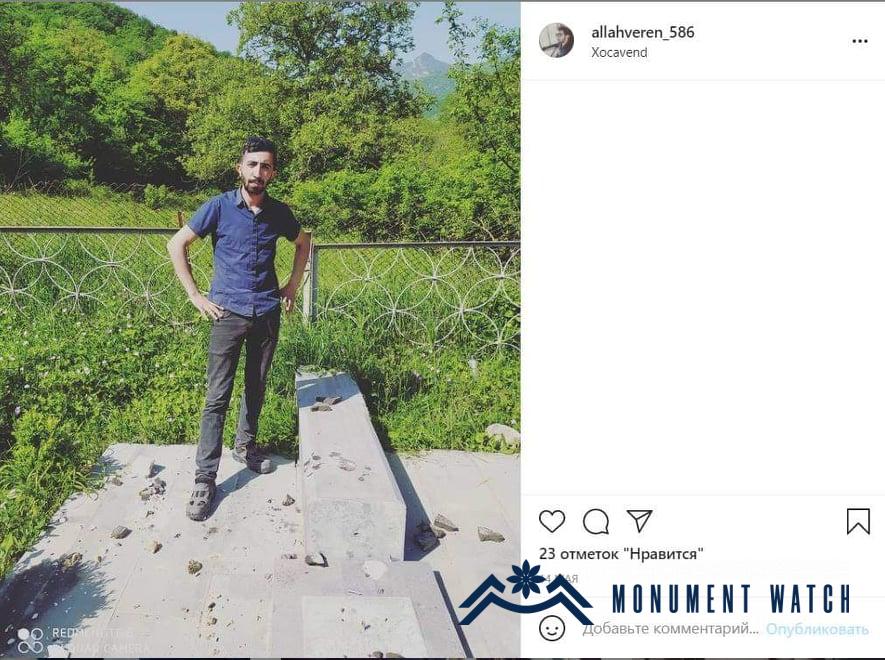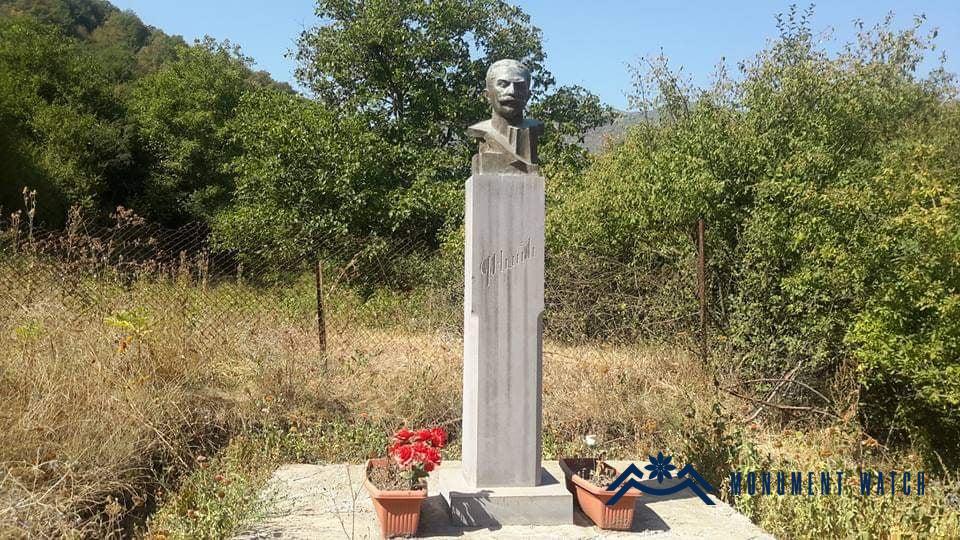Destruction of the Bust of Tevan Stepanyan in Tumi Village of Hadrut Region
On May 14, 2021 an Instagram-user ‘allahveren_58’ shared a photo in his account, showing a young man that threw to the ground the bust of the National hero, statesman and military leader Tevan Stepanyan (fig. 1) next to Siser spring in Tumi village of the occupied region of Hadrut.
The bust was placed in the hero’s home village in 2011. His grandfather’s house also located in this village had been renovated and was functioning as a house-museum of the hero (source).
It should be reminded that Tevan Stepanyan participated in the First World War, and after returning back to his native village in 1918-1920-s he fought in battles against Turkish-Tatar army. In 1920, after massacre of the Armenians in Shushi he participated in the liberation struggle of Artsakh as the commander of Dizak. Later, with the help of Garegin Nzhdeh, he liberated Khtsaberd, Mets Tagher, Drakhtik, Suz, Keshishkend, Chartar and many other villages. He also was the leader of the liberation wars of Dizak and Varanda (source).
Our response
In response to the destruction of the bust of Tevan Stepanyan by Azerbajan, we find it necessary to recall, that according to the Hague Convention of 1954 for the Protection of Cultural Property in the Event of Armed Conflict the harm caused to the cultural values of any of the peoples is threat to the cultural heritage of all mankind, because each nation makes contribution to the diversity of the world's cultures. In this context, the monument to Tevan Stepanyan is a cultural property, and should be protected as a cultural property of universal human values.
In addition, according to the First Article of the 1954 Hague Convention, which makes the basis for all other international agreements, cultural value, regardless of its origin and owner, is considered to be movable or immovable property of great importance for the cultural heritage of every nation, such as monuments of architecture, art or history, whether religious or secular. It is especially emphasized here that the cultural value does not depend on the fact of its origin, is not limited in time, pattern and form. It is important that the value of the heritage is determined by the nation, and in this case - by the Armenians of Artsakh. And no matter what kind of emotions the cultural value evokes in enemy, it must be protected.
The 4th article of the Convention notes that the parties are obliged to respect cultural properties situated within their own territory as well as within the territory of other parties. It is forbidden to use these values for such purposes that may cause the destruction or damage of these values in the event of armed conflict, and the parties should refrain from any manifestation of hostility towards those.
The parties undertake to prohibit, prevent and, if necessary, put a stop to any form of theft, pillage or misappropriation of, and any acts of vandalism directed against, cultural property.
According to the first protocol of the 1954 Hague Convention, it is forbidden to destroy cultural or spiritual values in the occupied territory. The Second Hague Protocol of 1999 also ratifies that requirement and prohibits any act of hostility and retaliation against inheritance, which is classified as an international crime by Article 15.
Destruction of cultural property is prohibited by the Geneva Convention of August 12, 1949 for the Protection of War Victims, on the Laws and Customs of War, by four International conventions and protocols, and the relevant UN resolutions and treaties on the protection of human rights.

